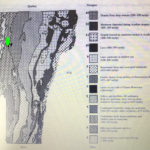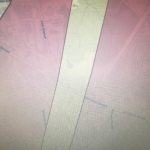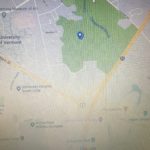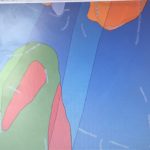Bedrock
The bedrock of Burlington, or generally the west side of Vermont, is beach sandstone and shallow marine limestone. In Centennial Woods there are two different kinds of bedrock. There are limestone, dolomite, other carbon rich sediments, marble, and dolomitic marble. The other kinds of bedrock found in Centennial are Quartzone metasandstone, quartz granofels, quartzite, and quartzose gneiss. These are also sedimentary rocks. These are rocks that are rich in calcite and were deposited after the Iapetus Ocean widened approximately 500 million years ago. During this time different kinds of limestone and shale were deposited.
Produced by Lang, D. (1996). The Geology of Vermont, Heldref Publications (Rocks and Minerals Vermont Issue), retrieved from https://dec.vermont.gov/sites/dec/files/geo/StatewidePubs/VermontGeoWebDoolan.pdf
Geosprocket LLC, UVM Place Program. Maps of the Burlington VT Region. Burlington Geographic. Retrieved from http://www.uvm.edu/place/burlingtongeographic/maps/interactive/index.html
Surficial
Surficial geology in Vermont started when the Laurentide Ice sheet formed and spread across Vermont. The ice sheet formed about 2.5 million years ago and was at its peak 20,000 years ago. It then started to melt and by 10,000 years ago it melted. It brought glacial till, lake sediment, clay, and gravel. Lakes and rivers at the time of the glacial retreat carried marine sediments. This is glacial outwash deposit. Champlain sea deposit is the surficial geology of my spot in Centennial. Marine sediment comes in various sizes, and the one in my spot is pebble sized.
Geology, both bedrock and surficial, is important because it tells a story of the basis and formation of a landscape. It serves as the parent material for soil. Parent material of soil depends on which way it was transferred in the past. In my spot the soil must have been transferred by a lake so marine sediment is the parent material. Soil is the foundation of life by giving nutrients to plants. What’s inside the bedrock and surficial can help to determine the fertility of soil. This would then help to determine which trees persist in certain areas. This ultimately helps to determine the landscape. Areas with limestone and dolostone, rich carbonate rocks would have richer, higher pH soils. There wouldn’t be as high of a pH for my spot because an area that has a stream would have greater acidity due to a lower buffer capacity. Also, there are more species that decay; this acidifies the soil.
Topography
In my site I am on a hill. The hill I see doesn’t have too narrow of a slope. Topography has an influence on the amount of organic material soil. On mountains, with greater slope there would be greater drainage and less organic material in the soil. Since my spot isn’t on a steep slope, and it’s on a low bottom valley, it has a fairly high organic content. The soil is a dark brown color which indicates a high organic content.
The characteristic of the soil in my spot is sandy and loamy.
- Geosprocket LLC, UVM Place Program. Maps of the Burlington VT Region. Burlington Geographic. Retrieved from http://www.uvm.edu/place/burlingtongeographic/maps/interactive/index.html




